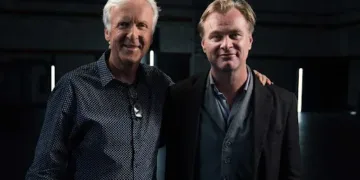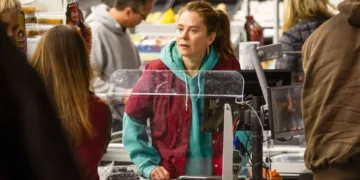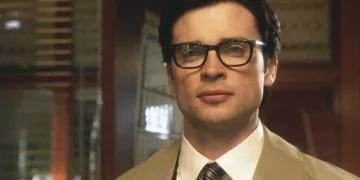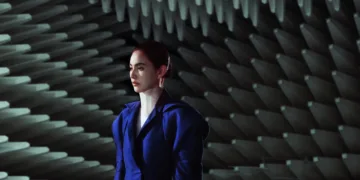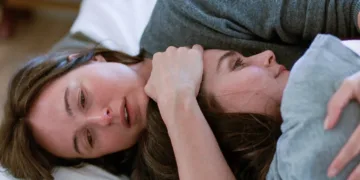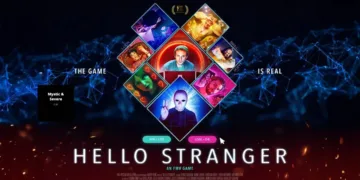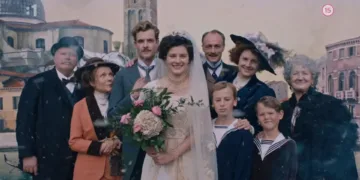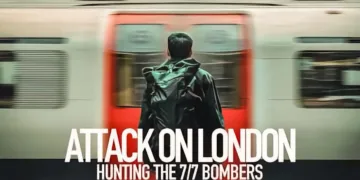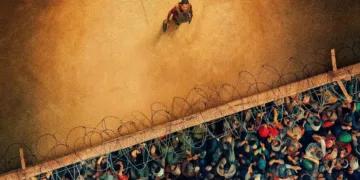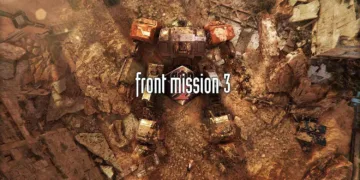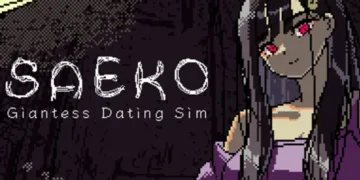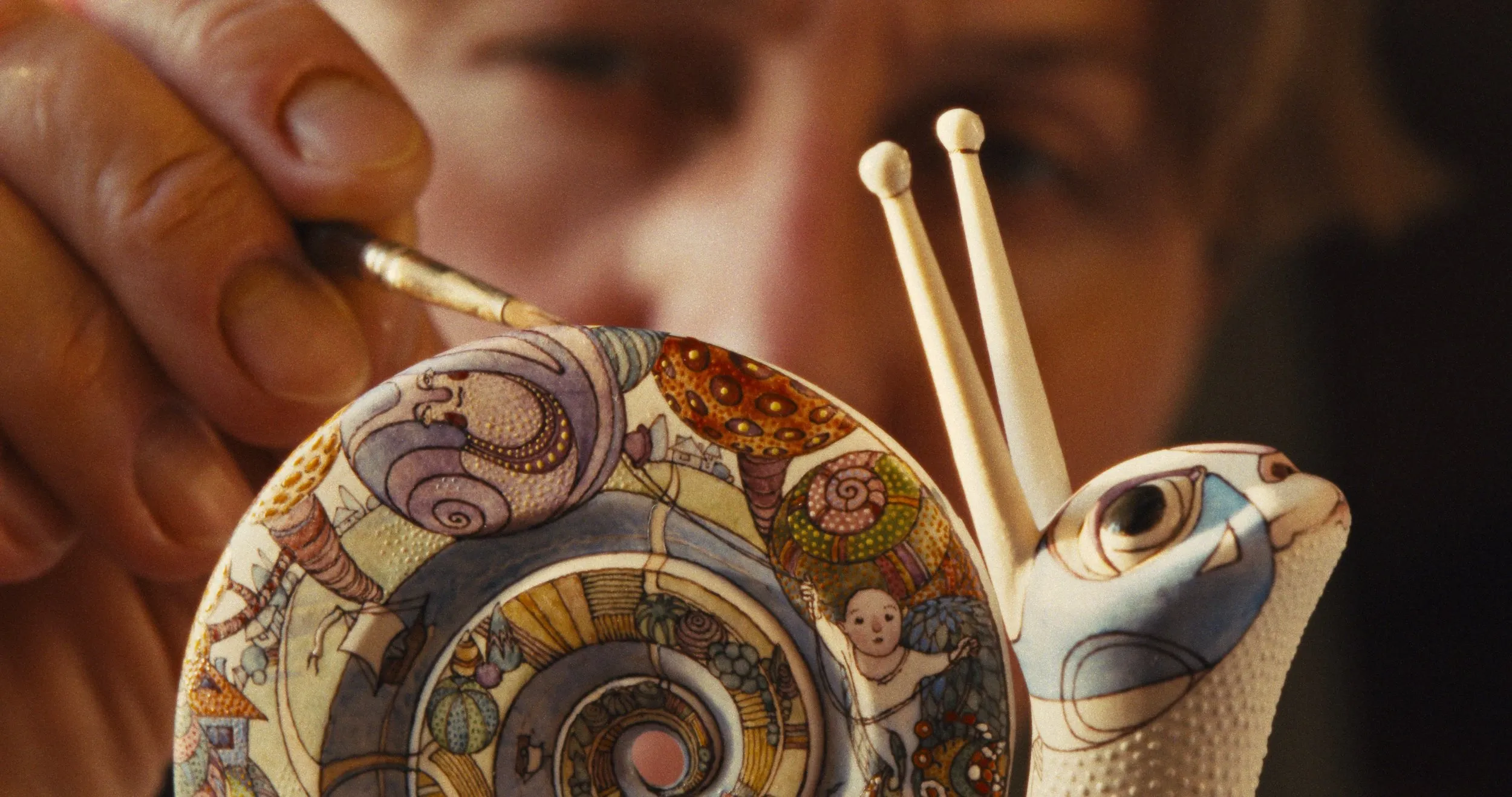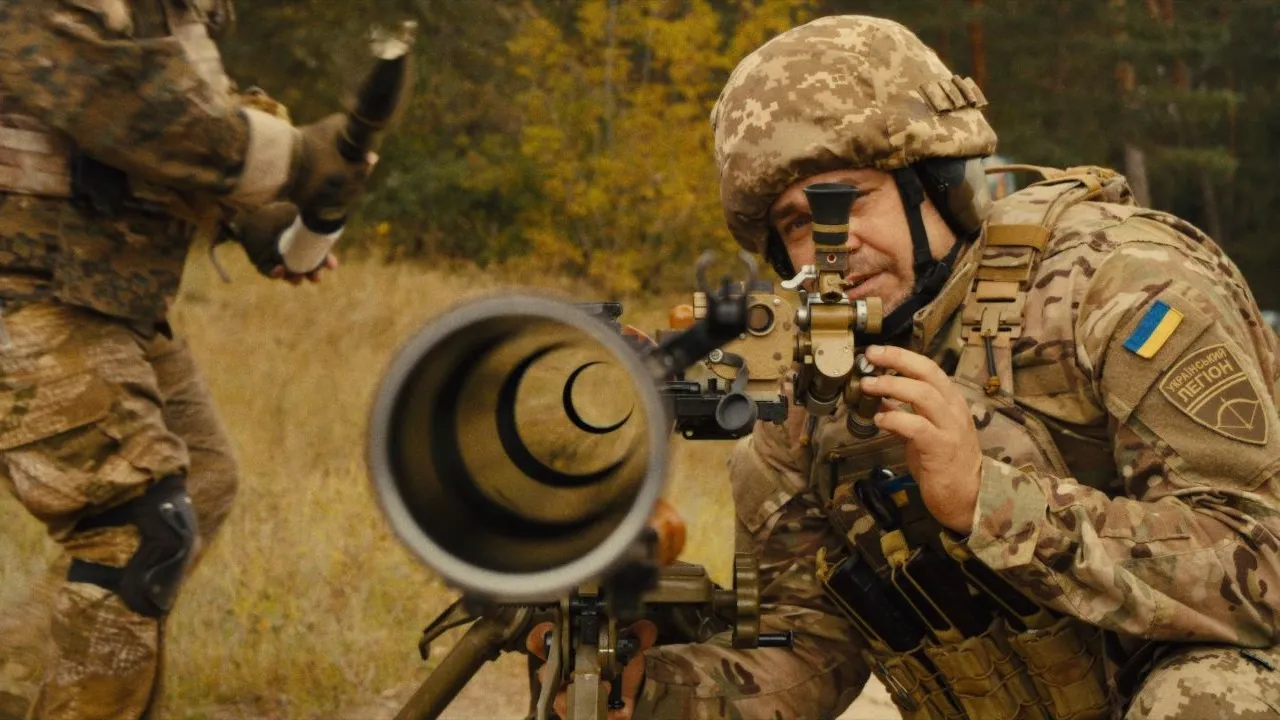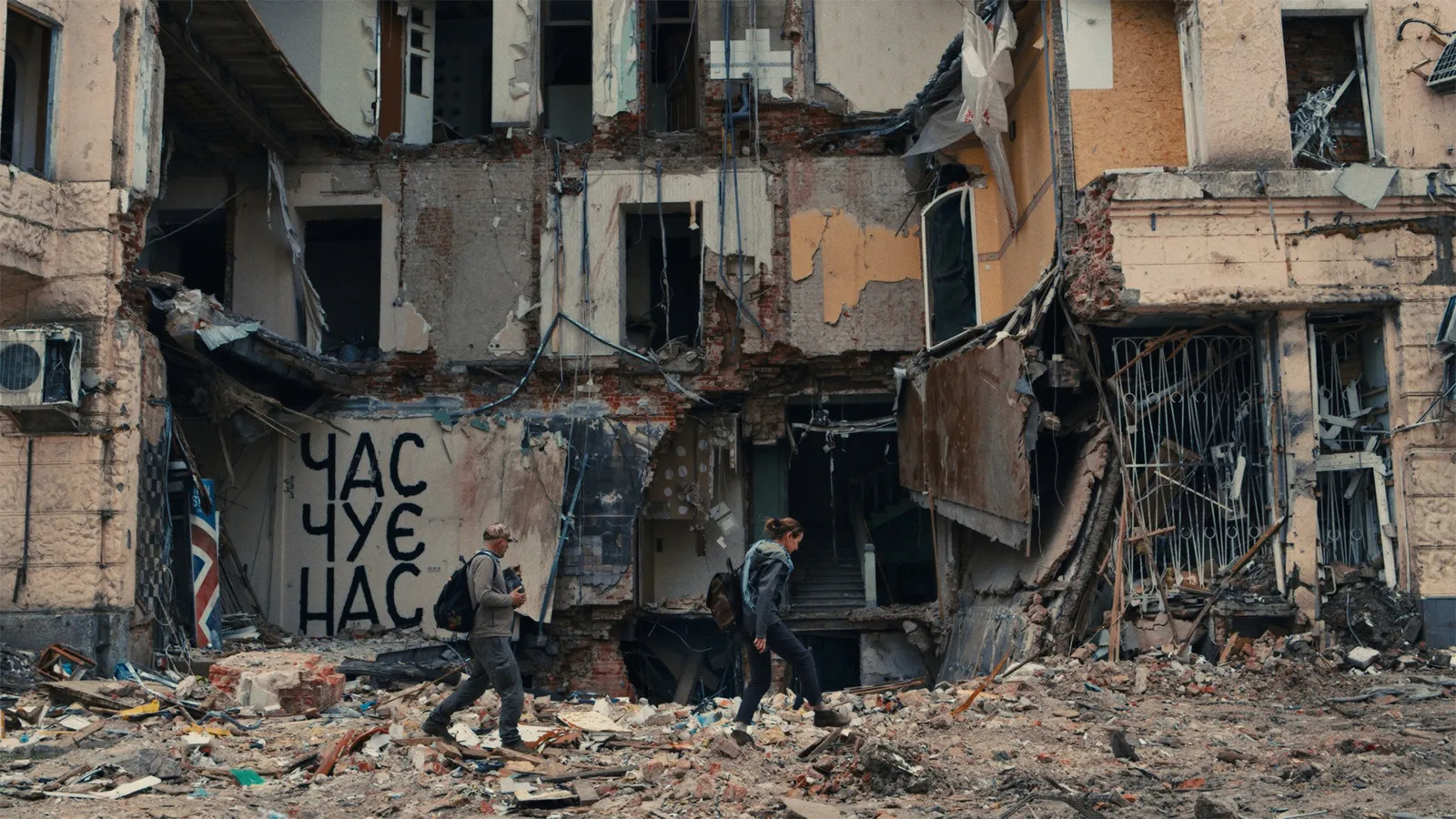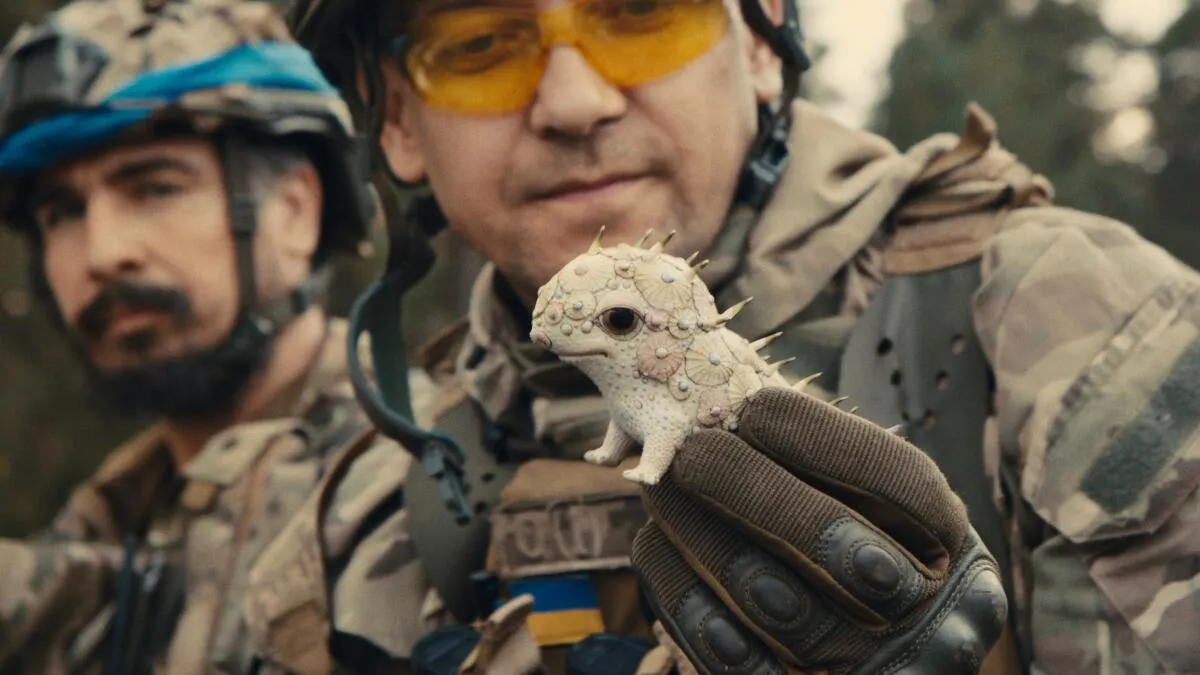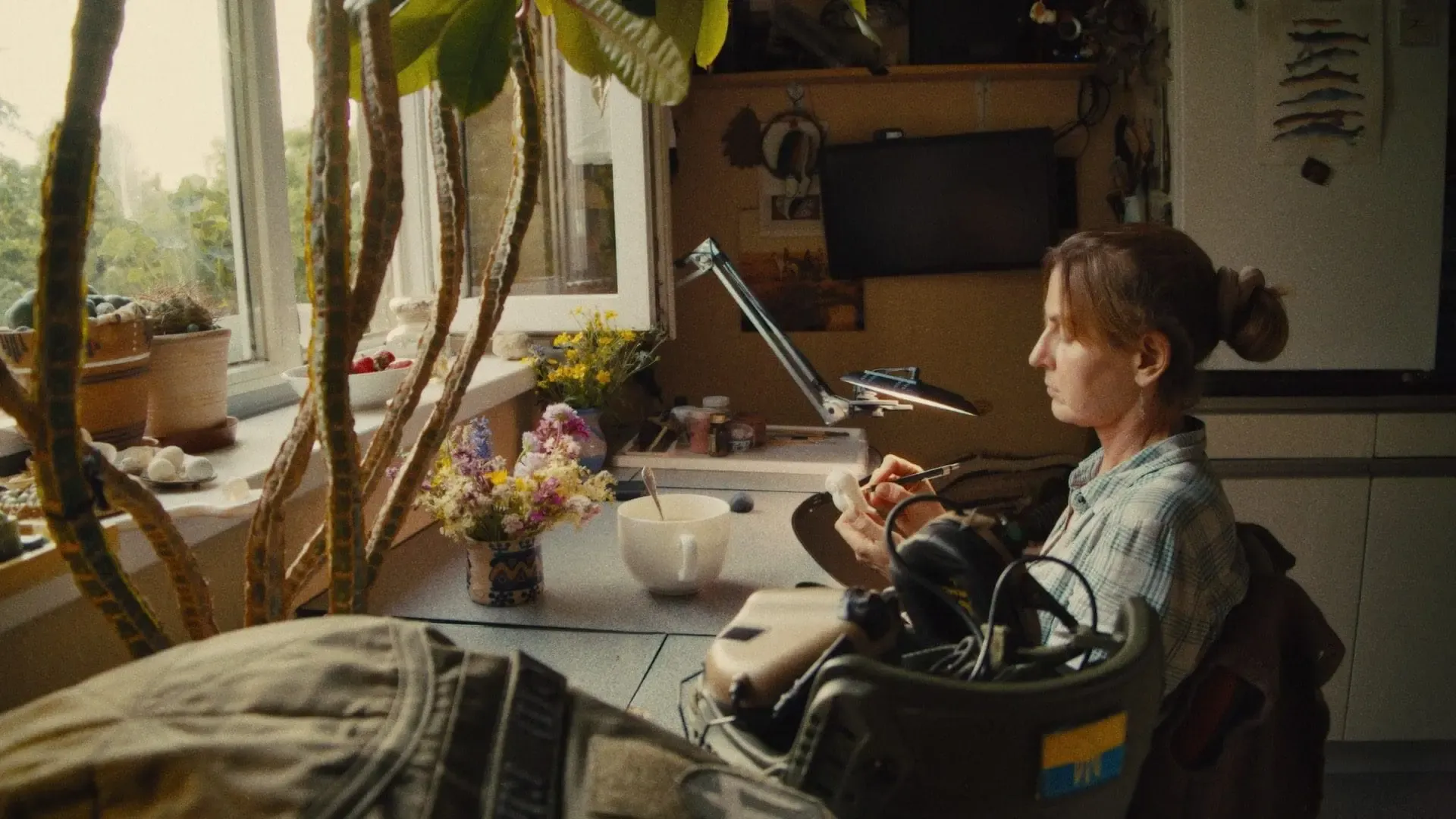Brendan Bellomo and Slava Leontyev’s film Porcelain War is a powerful testament to resilience in the face of conflict. The documentary follows Leontyev, a clay artist, and Anya Stasenko, his partner, as they act as resistance in Kharkiv’s war-torn neighborhoods. Their whimsical porcelain works stand as vibrant signs of hope in the shadow of destruction.
The film skillfully mixes peaceful art with the raw violence of war, which makes you think deeply about the role of beauty in times of trouble. Can art grow when everything else is falling apart? (It’s funny to think about whether beauty is just an escape from chaos.)
Leontyev’s quote, “Porcelain is fragile but eternal,” has a deep meaning beyond ceramics and encompasses Ukrainian identity. In this way, the Porcelain War becomes a microcosm of the fight for cultural identity preservation in the face of geopolitical aggression, encouraging viewers to reflect on the intricate relationship between art, survival, and culture.
Art as a Form of Resistance
The Porcelain War is a powerful symbol of the human spirit’s ability to endure. It turns the fragile world of ceramic art into a powerful tool for resistance. Charming owls, intricate snails, and whimsical dragons are some of Slava Leontyev’s porcelain creations, which embody a deep resilience story. Thanks to its meticulous craftsmanship, each piece serves as a counterpoint to the destruction around it. One could even call this artistic defiance “ceramic insurgency.”
Anya Stasenko’s role as the painter of these porcelain figures adds an additional layer of emotional depth. Her vibrant, narrative drawings give these fragile creations life and turn them into vessels of hope. A sense of nostalgia and a longing for a world free of war permeates the whimsical scenes she paints. (One could say that memories are like porcelain: they’re both beautiful and dangerous.)
Leontyev and Stasenko use their art to deal with the chaos of air raids and places that have been bombed. The significance of their work is heightened by the ruinous backdrop against which their creative process is taking place. Their porcelain furniture is a strong symbol of resilience by being placed in damaged landscapes, where their vibrant colors stand out against the gray rubble. They left behind a lot of artifacts from their city as a quiet protest against those who want to erase their culture.
Viewers are invited to reflect on the larger implications of cultural expression during the conflict by this juxtaposition of art flourishing in the face of destruction. It makes you think about what it means to live in a wartime world when art becomes a form of defiance. Art serves as a bittersweet reminder of what has been lost, or is it an act of defiance? These works of art deeply impact the Porcelain War, solidifying their role as both a personal refuge and a rallying cry for the whole country.
Personal Narratives
Both are a documentary about art and a personal look at individuals in unusual situations, such as the Porcelain War. Three artists who changed into hesitant soldiers amid the chaos of war are Slava Leontyev, Anya Stasenko, and their friend Andrey Stefanov in the film’s form.
While Anya, his partner, adds her artistic touch with vibrant, story-filled paintings, Slava, a ceramicist, has created whimsical porcelain figures. Through his lens, Andrey, a former photographer, captures how people feel conflict. The dangerous world of survival is now being navigated by these three individuals, who are connected by friendship and creativity.
As suddenly as a porcelain figure breaking on concrete, they went from being artists to fighters. Slava’s decision to teach citizens how to use weapons brings out a poignant irony: the hands that used to make delicate art are now teaching others how to use weapons. (One might consider the situation’s absurdity—who knew ceramics could be used as a military crash course?) This juxtaposition of art and militarism highlights the larger social problem of how war permanently alters everyday life.
You can feel how much this conflict hurts people emotionally. The weight of pain strains the relationships of the three as they try to adjust to their new roles. Slava and Anya’s relationship was based on their shared interest in art, but now it’s strained by their worries about staying alive. As Andrey films the destruction around him while longing for his family’s safety, being away from them adds another layer of heartbreak.
These individual stories serve as a microcosm of the larger human experience during times of war, illustrating the physical and mental wounds left in the wake of conflict. The act of creation is not just a refuge but also a reminder of what is at stake, as shown by the complex tapestry of resilience and vulnerability that appears. The film ends with a disturbing truth: the artists can’t escape the emotional effects of their broken lives, not even as they fight for life.
Documentary Style and Techniques
The unique documentary style used in Porcelain War strengthens its emotional and thematic impact. Notably, a lot of the film was shot by Slava Leontyev, Anya Stasenko, and their friend Andrey Stefanov, which gives it an instant sense of being real. (This could be called the “you-are-there” effect because the watcher is not just watching but also taking part in the scary journey without realizing it.) This filmmaking method gives it a rawness that isn’t always present in standard documentaries, capturing the raw realities of life under siege.
The immediate nature of personal video lets viewers see both normal and unusual events, like how their dog Frodo plays or the chaos of an explosion nearby. This blend of the mundane and the ominous highlights the absurdity of their position: life goes on while danger is always around the corner. Being a ceramic artist and a soldier simultaneously is a strange but funny juxtaposition.
The film uses animation as a powerful storytelling tool, turning Anya’s delicate drawings into moving images that give her stories power. The stark images of war in the documentary stand in sharp contrast to this artistic flourish. The tranquil beauty of their porcelain creations and the vibrant animations frequently contrast sharply with the destruction around them, effectively illustrating the theme of resilience against chaos.
The vibrant colors of the artists’ works counterpoint the gray shadows of war, reminding us that beauty can persist even in the darkest of times. Through these visual contrasts, Porcelain War captures both the fragility of art and the enduring spirit of a culture under siege. In this way, the documentary elevates its artistic form, encouraging thought on the power of art as both a personal refuge and a social statement.
Juxtaposition of Beauty and Destruction
The differences between peaceful beauty and stark destruction in Porcelain War are handled with great skill, creating a visual and emotional tapestry that is both haunting and uplifting. The film frequently contrasts the gloomy facts of war-torn environments with idyllic scenes of nature, such as golden fields, blooming flowers, and Frodo, the couple’s dog.
The fragility of life and the resilience of the human spirit are both powerfully contrasted in these contrasts, which also serve as a backdrop. (One could say it’s like a fragile porcelain vase perched dangerously on the edge of a table falling apart.)
Beyond mere aesthetics, these juxtapositions have strong messages about endurance. The fact that nature’s beauty stays the same despite its surroundings falling apart supports the idea that hope can grow amid despair. This play with themes asks viewers to reflect on how life can persist despite seemingly insurmountable odds. It’s a sobering reminder that beauty can serve as a place of refuge and a catalyst for change.
Furthermore, the beauty of the artists’ works becomes a deep sign of Ukrainian cultural identity. Slava and Anya embody the essence of a culture fighting to live as they create their porcelain figures. Their work’s vibrant colors and intricate details starkly contrast with the destruction of war, symbolizing a defiance that goes beyond the actual destruction they see. As a testament to the steadfast spirit of a people who refuse to be erased, art becomes a means of showing national identity in this way.
By combining these aesthetic and thematic elements, Porcelain War highlights the resilience of its subjects and a bigger truth about the power of art: it can serve as both a mirror and a beacon, illuminating the way for individuals and communities in times of crisis. Like the fragile beauty of porcelain, the film tells us that even when faced with destruction, the essence of cultural identity can endure and thrive.
Cultural Identity and Heritage
The act of cultural preservation becomes a central theme in Porcelain War, illustrating how crucial it is to preserve one’s heritage in the middle of the conflict. Art is an act of cultural defiance for Slava Leontyev and Anya Stasenko, not just a personal effort.
Their porcelain works and paintings embody a strong link to Ukrainian culture, featuring traditional themes and stories that ring true to the collective memory of their people. (One could even call this artistic act a “cultural lifeboat” that helps people keep their identity alive when things get rough.)
The artists incorporate their heritage into every piece, from the intricate patterns that evoke folk tales to the vibrant colors that honor the beauty of Ukraine’s landscapes. This dedication to cultural expression serves as a strong counter-narrative to the destruction caused by war, emphasizing that cultural identity can be a beacon of hope even in the most difficult times.
But the bigger effects of cultural loss are very clear. War doesn’t just kill people; it threatens society’s identity by wiping out stories, traditions, and works of art that have been passed down from generation to generation. As institutions fall apart and artists run away, the film poignantly highlights how the arts and humanities frequently suffer from conflict.
Leontyev and Stasenko’s role becomes more important in this situation. They act as custodians of their country’s history, using their skills to show how the war has changed things while preserving Ukrainian culture’s essence. Their art becomes a testament to resilience, a reminder that people’s stories and traditions can endure despite adversity. As they create, they argue that art can serve as both a shield and a sword in the fight for cultural survival, challenging the idea that war can destroy culture.
Final Thoughts on the Film’s Impact
Porcelain War poignantly explores resilience, identity, and the transformative form of art in the face of power. The film’s main themes—juxtaposing beauty with destruction, cultural identity, and the role of artists as custodians of heritage—create a rich tapestry that invites in-depth thought.
Every moment that Slava, Anya, and Andrey record is a testament to the human spirit’s unwavering resolve and a reminder that creativity can thrive even in the most trying situations.
The future of Ukraine’s art and culture is very uncertain because of the ongoing conflict. Will the creative spirit persist, or will war’s weight crush it? According to the film, as long as artists like Leontyev and Stasenko keep making art, there is hope. Their efforts stand as a beacon for future generations as well as a mirror of their own experiences, ensuring that the story of Ukraine, with its vibrant, multifaceted identity, lives on in the ruins.
The Review
Porcelain War
The documentary Porcelain War captures the intersection of art and conflict in remarkable depth and is both visually stunning and emotionally resonant. Through the lens of Slava Leontyev and Anya Stasenko, the film highlights the resilience of the human spirit and the fragility of cultural identity during wartime. It is an important look at hope in despair because it blends human stories, striking images, and moving themes. People interested in the power of art as a form of protest should watch this.
PROS
- Captures the profound impact of war on personal and cultural identity.
- Striking cinematography and animation enhance storytelling.
- Personal footage offers an intimate glimpse into the artists' lives.
- Highlights the importance of preserving Ukrainian heritage.
- Inspires hope through the lens of creativity in adversity.
CONS
- Some segments may feel drawn out amidst the emotional weight.
- Focuses primarily on a few individuals, potentially missing broader narratives.














